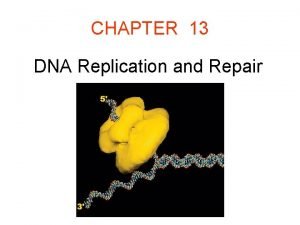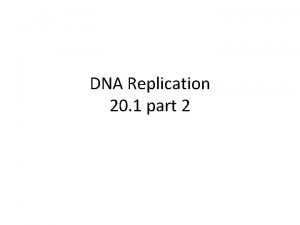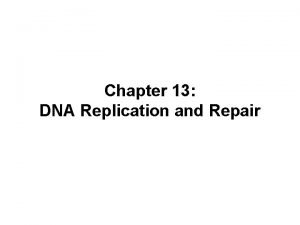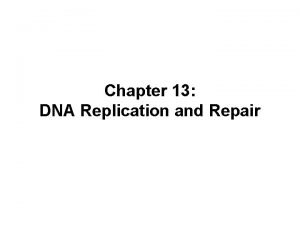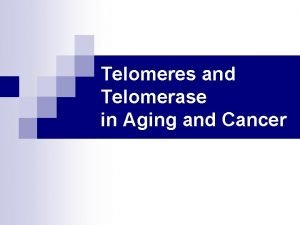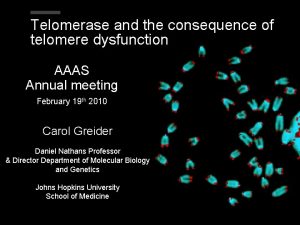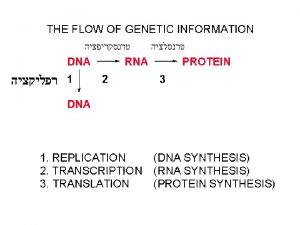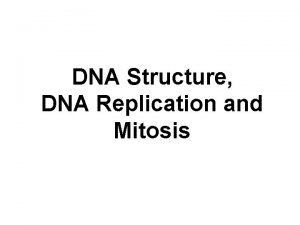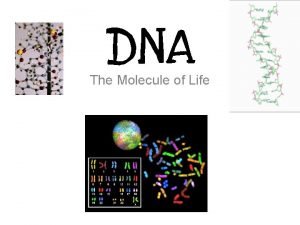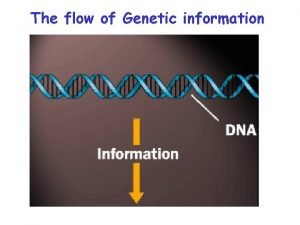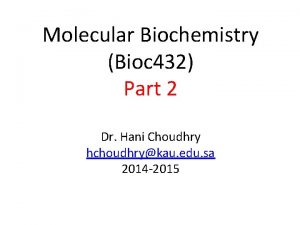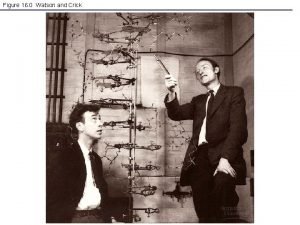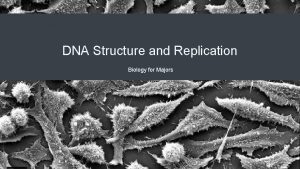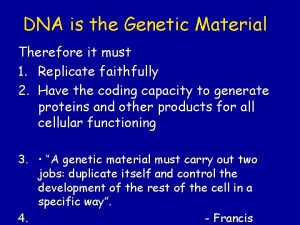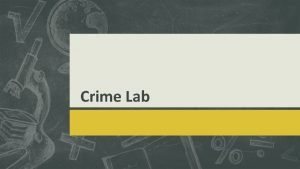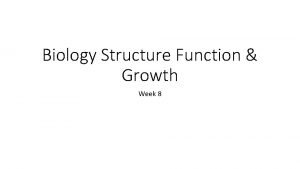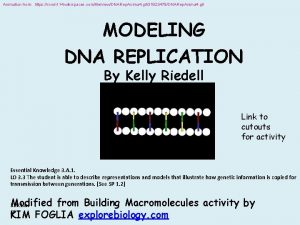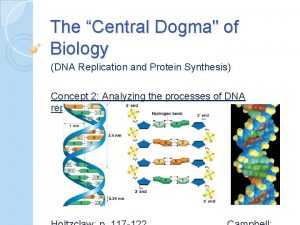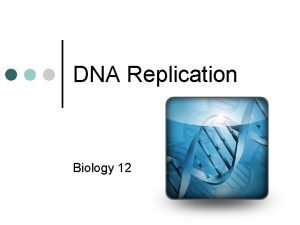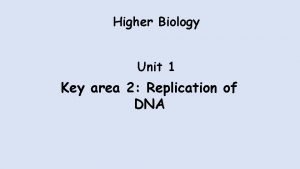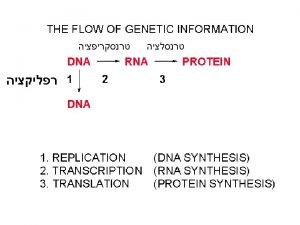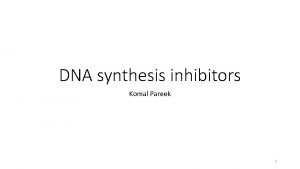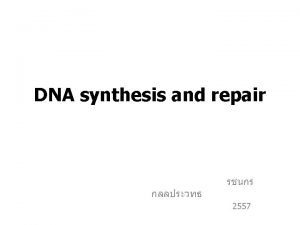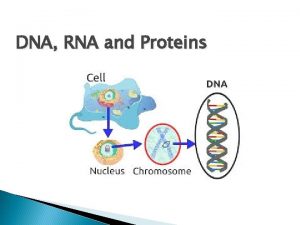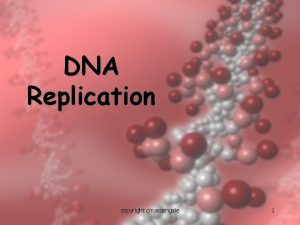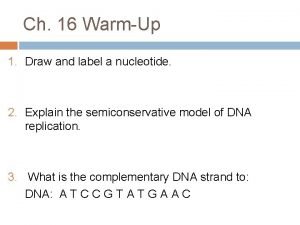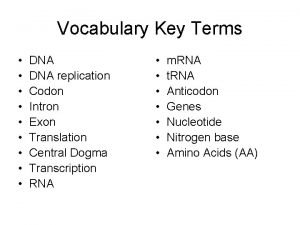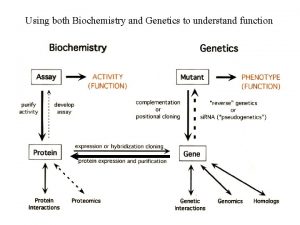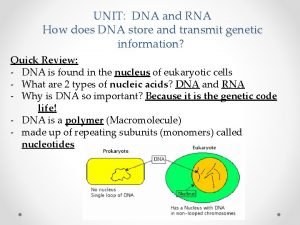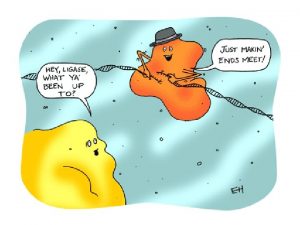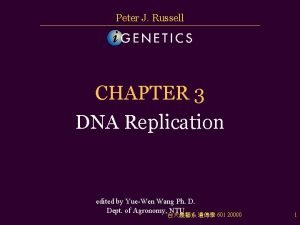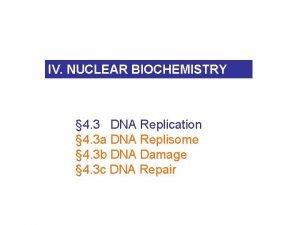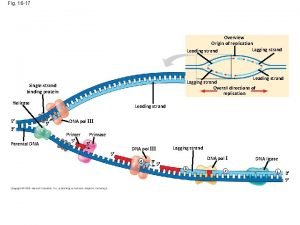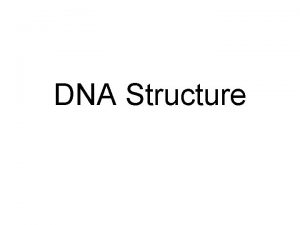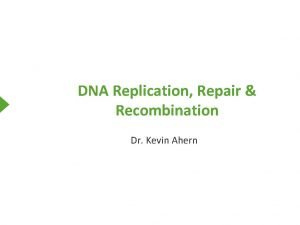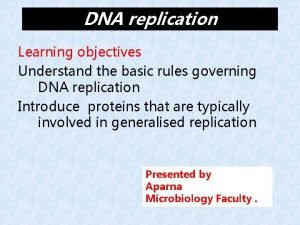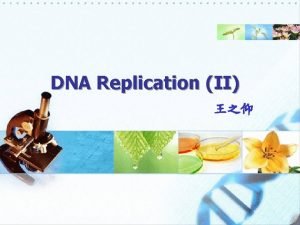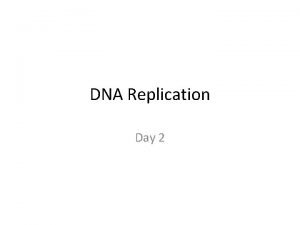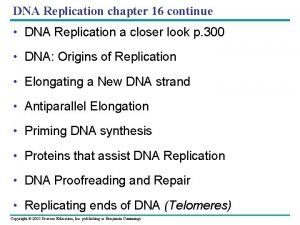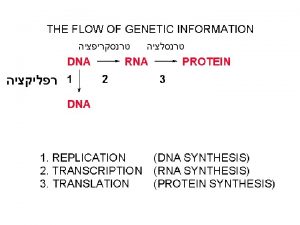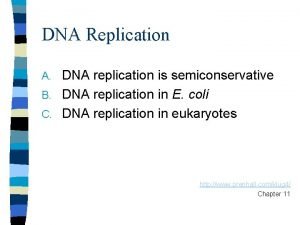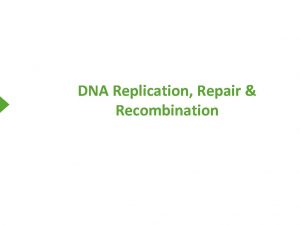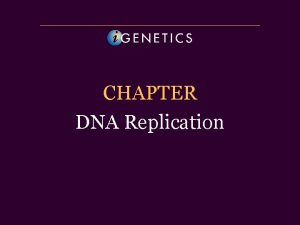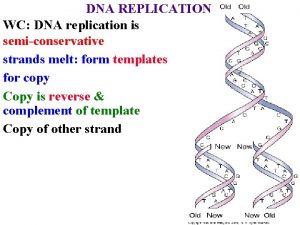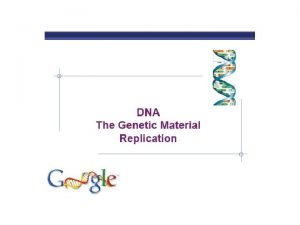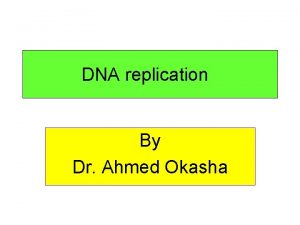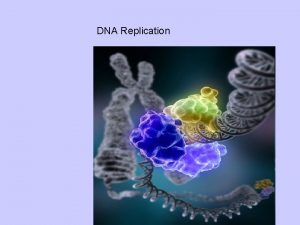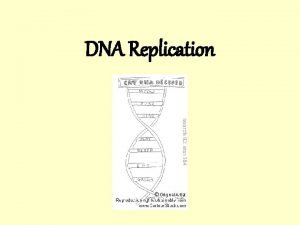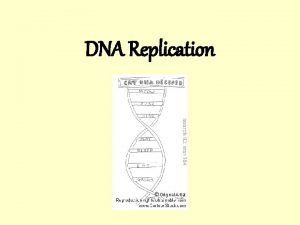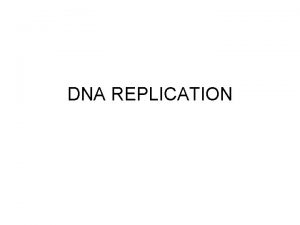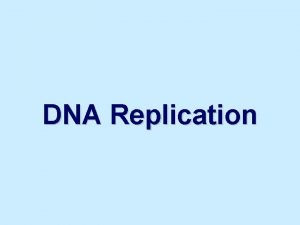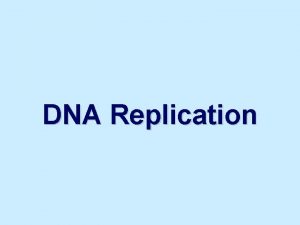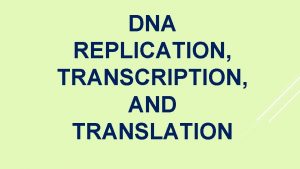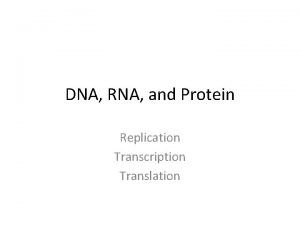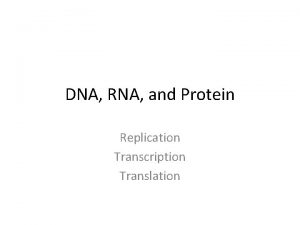telomerase Semiconservative replication Cell Division and DNA Replication





























































- Slides: 61


telomerase


הכפלה משומרת למחצה Semiconservative replication סרט ראשון

Cell Division and DNA Replication Cell Cycle Regulators Replication Initiation Replication Commitment Cell Growth & Completion of Replication Cell Division

שאלה In man 104 to 105 sites



הליקאז Dna. B helicase loader Dna. C




g b NTP

DNA Polymerase Bacteria ►Single Ori להראות סרט שאלה ►Initiation or replication highly regulated ►Once initiated replication forks move at ~400 -500 bp/sec ►Replicate 4. 6 x 106 bp in ~40 minutes


DNA SYNTHESIS REACTION שאלה P CH 2 P Base O 5' end of strand CH 2 P Base O P CH 2 O Base CH 2 Base O H 20 + 3' P Synthesis reaction P 5' CH 2 3' OH P P OH P products O CH 2 O P Base OH 3' end of strand


DNA Pol III activity • 5’ to 3’ DNA polymerase • Very processive: Once it locks on it does not let go • Very active: Adds 1, 000 nucleotides/sec! • High fidelity ( )מדויק : has a 3’ to 5’ exonuclease activity that removes mismatches

How good is Pol III? • 1 in 10, 000 bases added are mismatched. • Of these, all but 1 in 1, 000 are corrected by Pol III • E. coli genome 4, 000 bp – 400 mismatches – Probably all will be corrected by Pol III









Supercoiled DNA relaxed by gyrase & unwound by helicase + proteins: 5’ SSB Proteins Okazaki Fragments ATP 1 Polymerase III 2 3 Lagging strand Helicase + Initiator Proteins 3’ primase Polymerase III 5’ RNA Primer 3’ base pairs 5’ RNA primer replaced by polymerase I & gap is sealed by ligase 3’ Leading strand

DNA repair



topoisomerase

טופואיזומראז כמוטרפיה Etoposide – topo II inhibitor


DNA Replication DNA Polymerase held to DNA by clamp regulatory protein • • • Clamp protein releases DNA poly when runs into ds. DNA Assembly of clamp around DNA requires ATP hydrolysis Remains on leading strand for long time; only on lagging strand for short time when it reaches 5’ end of proceeding Okazaki fragments

Replication summery Replication Movie

Simultaneous Replication Occurs via Looping of the Lagging Strand • Helicase unwinds helix • SSBPs prevent closure • DNA gyrase reduces tension • Association of core polymerase with template • DNA synthesis • Not shown: pol I, ligase

Replication Termination of the Bacterial Chromosome · Termination: meeting of two replication forks and the completion of daughter chromosomes · Region 180 o from ori contains replication fork traps: ori Chromosome Ter sites

Replication Termination of the Bacterial Chromosome · One set of Ter sites arrest DNA forks progressing in the clockwise direction, a second set arrests forks in the counterclockwise direction: Chromosome Ter. B Ter. A



RNase H activity

תיאור הבעיה – קצוות חשופים של הכרומוזומים If this shoelace were a chromosome, then these two protective tips would be its


Tn. Am. Go type of minisatellite repeat TTAGGG – human TTTAGGG – Arabidopsis TTGGGG - Tetrahymena TTAGG – Bombyx TTTTAGGG – Chlamydomonas TTTTGGGG – Oxytricha TTAGGC - Ascaris (TG)1 -3 - Saccharomyces cereviceae

Telomere ● ● ● ● senescent cells have shorter telomeres תאים מזדקנים בעלי טלומרים קצרים length differs between species אורך הטלומר משתנה בין מינים שונים in humans 8 -14 kb long 8 -14 באדם אורכו בין telomere replication occurs late in the cell cycle ● עד 40 - מחלוקה אחת לשנייה מתקצרים הטלומארים ב . נוקלאוטידים 200

Functions ● ● ● Provide protection from enzymatic degradation and maintain chromosome stability מונע פרוק אינזימטי ושומר על הכרומוזומים Organization of the cellular nucleus by serving as attaching points to the nuclear matrix משמש נקודות מעגן למערך רשת הגרעין Allows end of linear DNA to be replicated completely מאפשר את סיום הרפליקציה של הכרומוזומים

End-to-end fusion

Telomerase 1. Telomerase binds to the telomer and the internal RNA component aligns with the existing telomer repeats. 2. Telomerase synthesizes new repeats using its own RNA component as a template 3. Telomerase repositions itself on the chromosome and the RNA template hybridizes with the DNA once more.

and Primase


Telomeres are packaged into a unique structure -- a T-loop

T-loop seen in the electron microscope Green = Telomere-specific proteins


Telomerase Tel Conc

Telomerase is not active in most somatic cells

Cancer cells have telomerase


Werner Patient Teenager Age 48


Reverse Transcriptase • Essential enzyme of RNA containing viruses such as HIV virus • Synthesizes DNA in 5’ 3’ direction from an RNA template • Viral RNA is degraded by RNase H domain of the protein, then complementary DNA is synthesized • DNA integrated into host cell chromosome from Molecular Biology of the Cell, Alberts, Bray, Lewis, Raff, Roberts, and Watson, Garland Publishing, New York 1994.
 Why is dna replication considered semiconservative
Why is dna replication considered semiconservative Semiconservative dna replication
Semiconservative dna replication Dna replication is considered semiconservative because
Dna replication is considered semiconservative because Bioflix activity dna replication lagging strand synthesis
Bioflix activity dna replication lagging strand synthesis Replication
Replication Semiconservative replication
Semiconservative replication Semiconservative replication
Semiconservative replication Semiconservative replication
Semiconservative replication Semiconservative replication
Semiconservative replication Replication fork
Replication fork Dna and genes chapter 11
Dna and genes chapter 11 Telomerase
Telomerase Telomerase
Telomerase Dna synthesis
Dna synthesis Telomerase
Telomerase Cell cycle and cell division
Cell cycle and cell division Cell cycle and cell division
Cell cycle and cell division Cell cycle chart
Cell cycle chart Dna structure and replication pogil
Dna structure and replication pogil Dna structure and replication packet answer key
Dna structure and replication packet answer key Dna replication transcription and translation
Dna replication transcription and translation Dna structure and replication
Dna structure and replication Dna meaning
Dna meaning Dna replication is semi-conservative
Dna replication is semi-conservative 5 enzymes responsible for dna replication
5 enzymes responsible for dna replication 3 models of dna replication
3 models of dna replication Major enzymes in dna replication
Major enzymes in dna replication Antiparallel in dna replication
Antiparallel in dna replication Dna jeopardy
Dna jeopardy Dna replication fork
Dna replication fork Missy baker
Missy baker What is the name
What is the name Nucleoside triphosphate in dna replication
Nucleoside triphosphate in dna replication Bioflix dna replication
Bioflix dna replication Cell analogy restaurant
Cell analogy restaurant Dna replication
Dna replication Higher biology dna replication
Higher biology dna replication Dna replication pearson
Dna replication pearson Dna replication direction 5' 3'
Dna replication direction 5' 3' Dna replication in bacteria occurs
Dna replication in bacteria occurs Dna replication
Dna replication Helicaee
Helicaee Dna replication comic strip
Dna replication comic strip S phase
S phase Accuracy of dna replication
Accuracy of dna replication Bioflix dna replication
Bioflix dna replication Dna replication
Dna replication Dna synthesis at replication fork
Dna synthesis at replication fork Dna replication phschool
Dna replication phschool Chapter 13 the molecular basis of inheritance
Chapter 13 the molecular basis of inheritance Significance of replication
Significance of replication The principal enzyme involved in dna replication is
The principal enzyme involved in dna replication is Intercalating agents
Intercalating agents Dna replication fork
Dna replication fork Dna replication
Dna replication Tata box
Tata box Replication fork
Replication fork Orc dna replication
Orc dna replication Significance of dna replication
Significance of dna replication Replication fork
Replication fork Dna replication
Dna replication The replication bubble and antiparallel elongation
The replication bubble and antiparallel elongation


